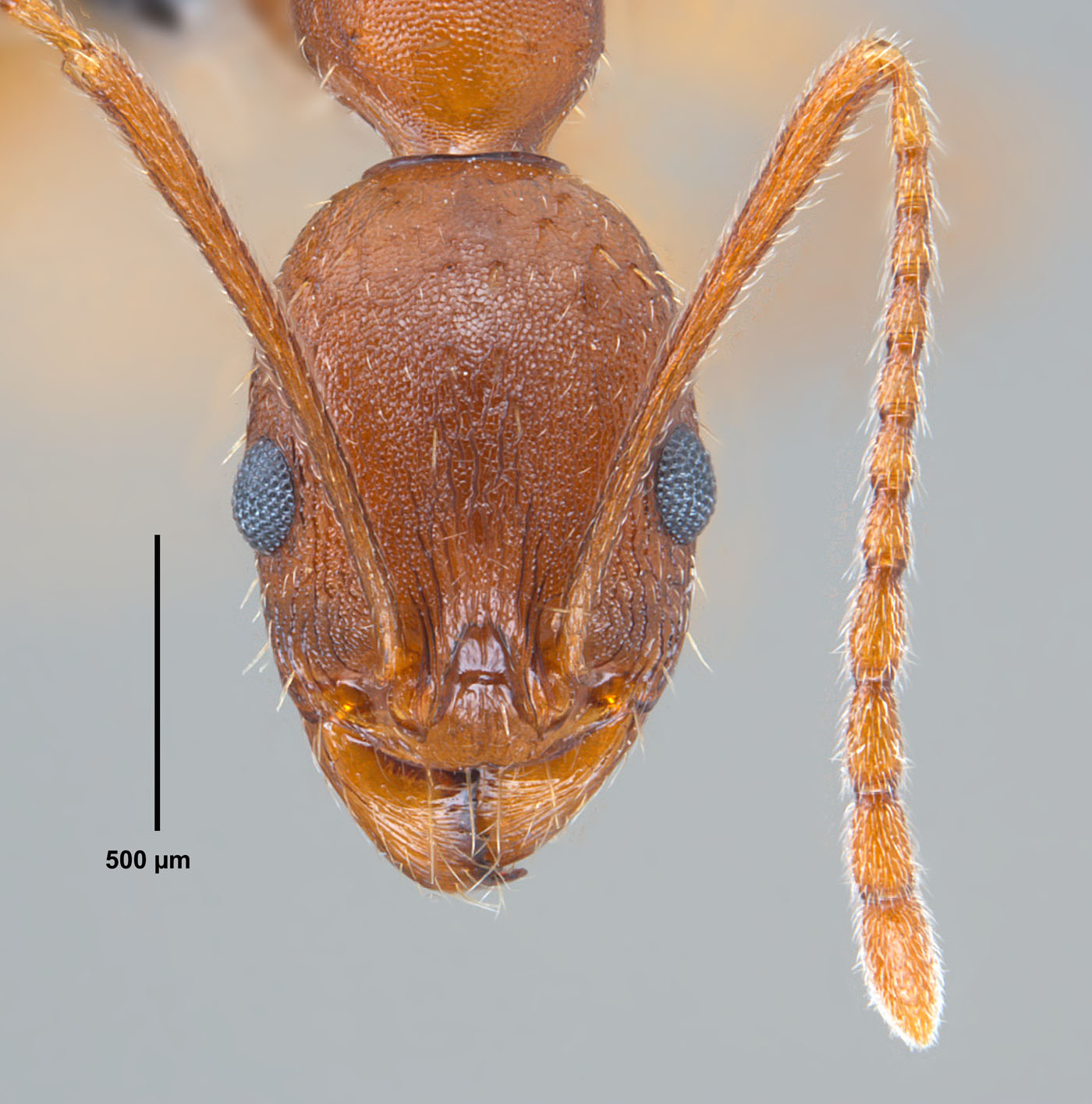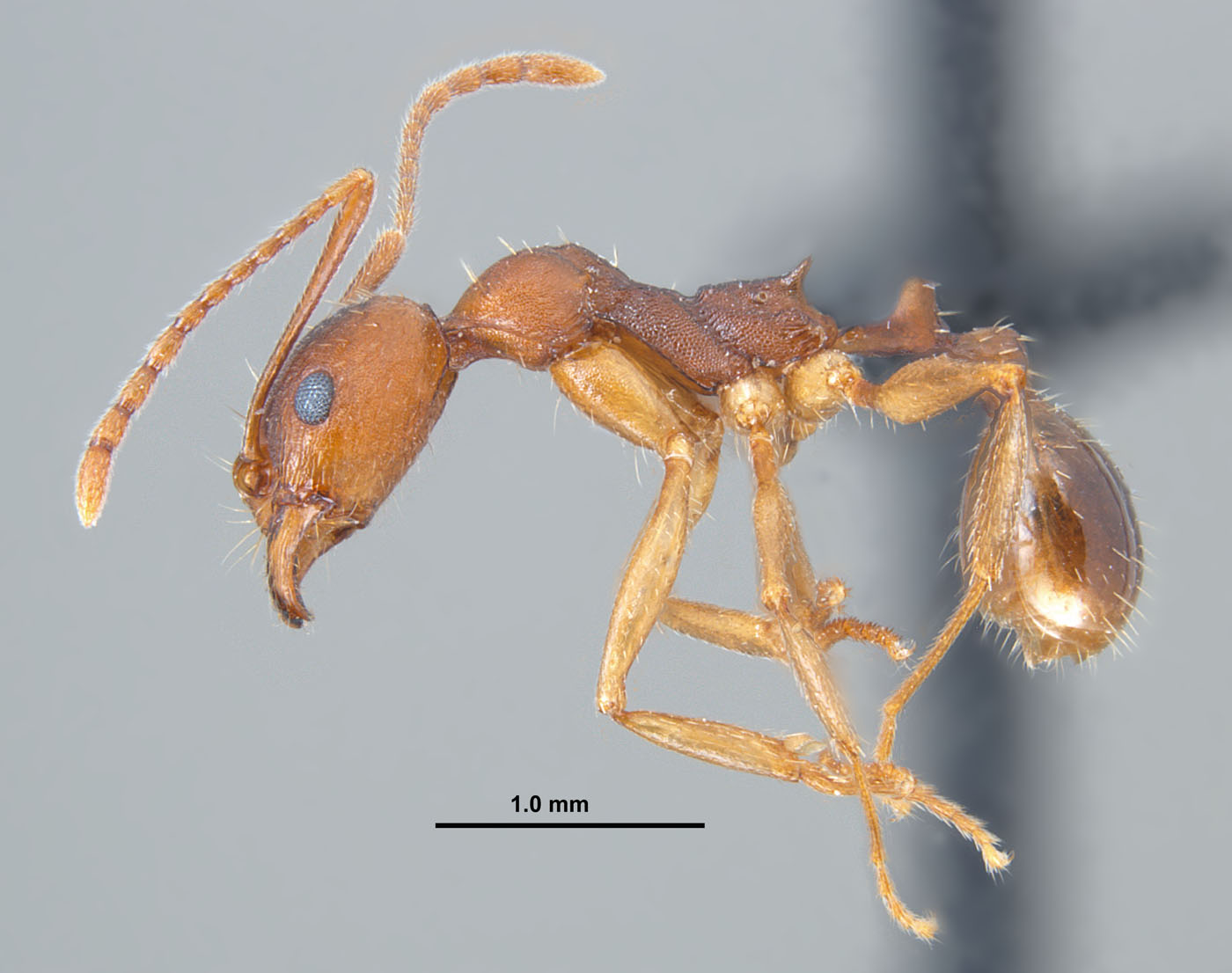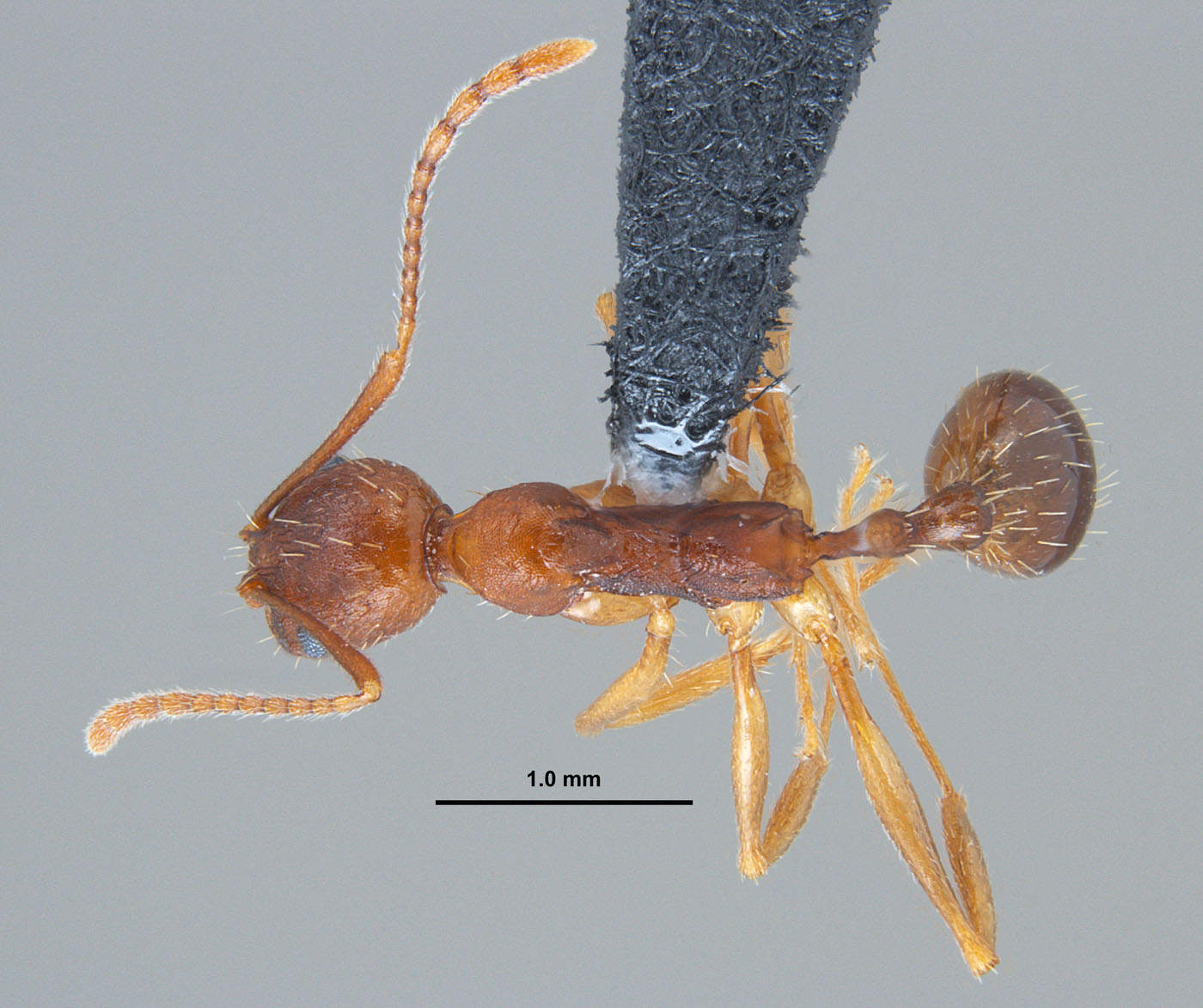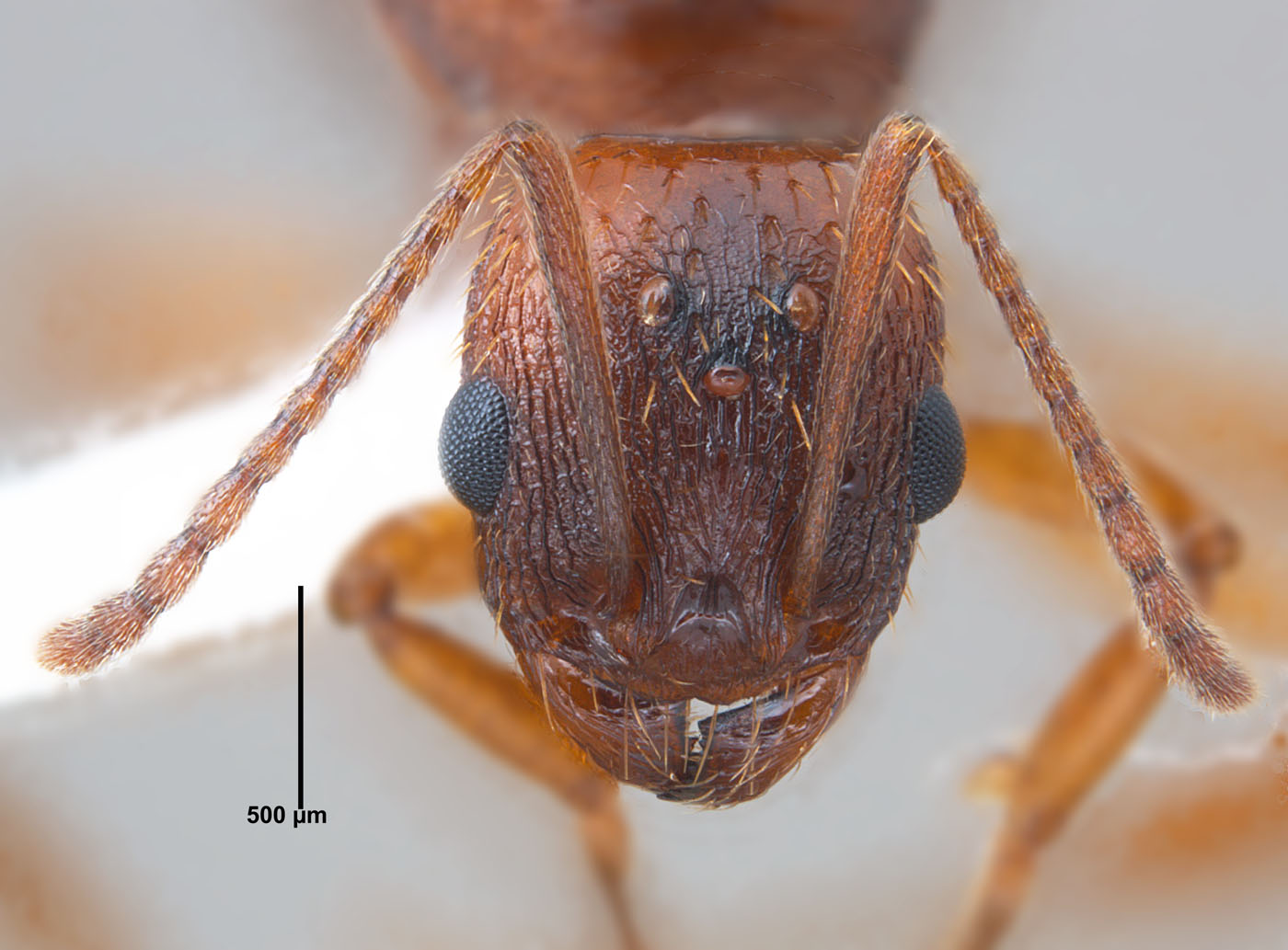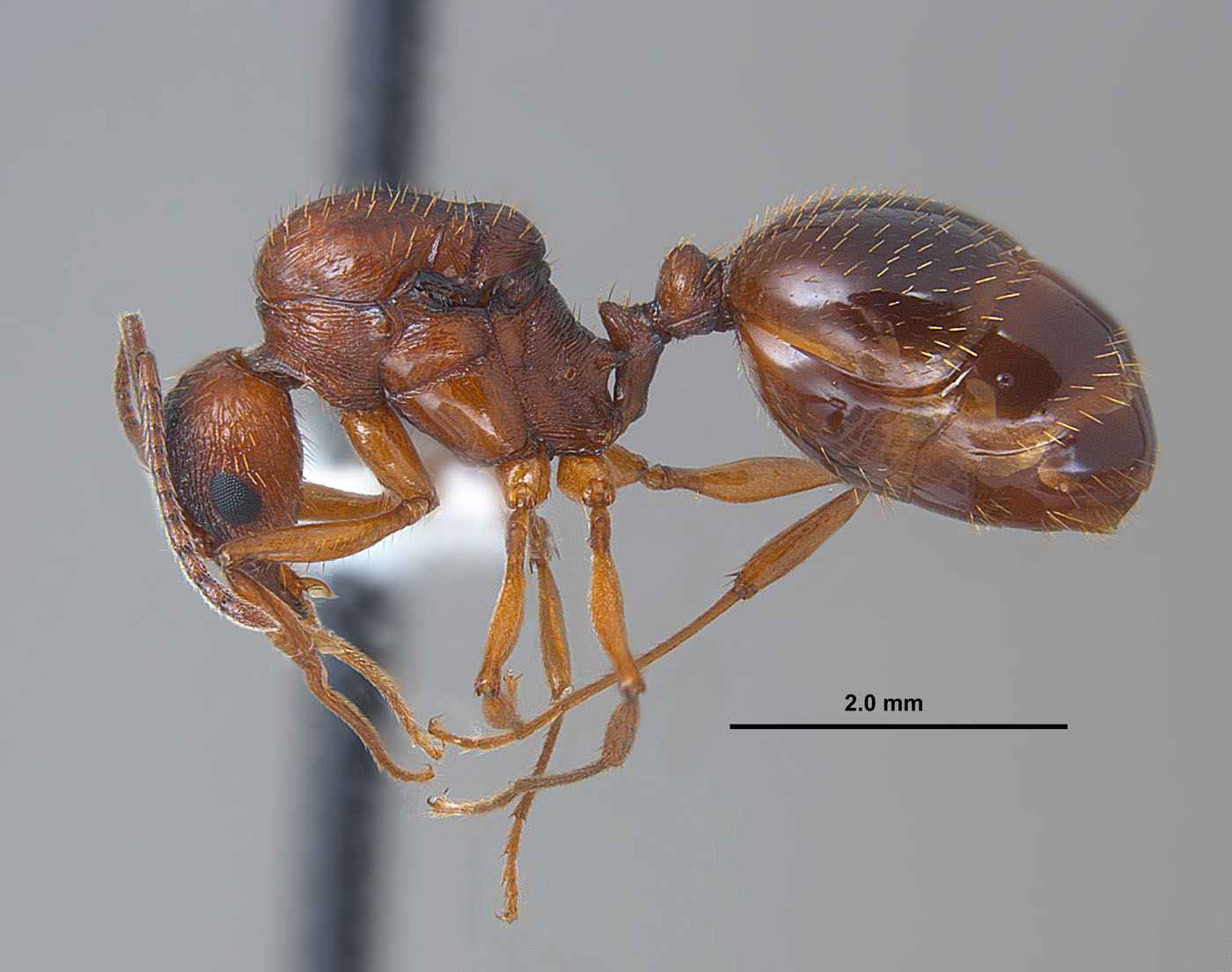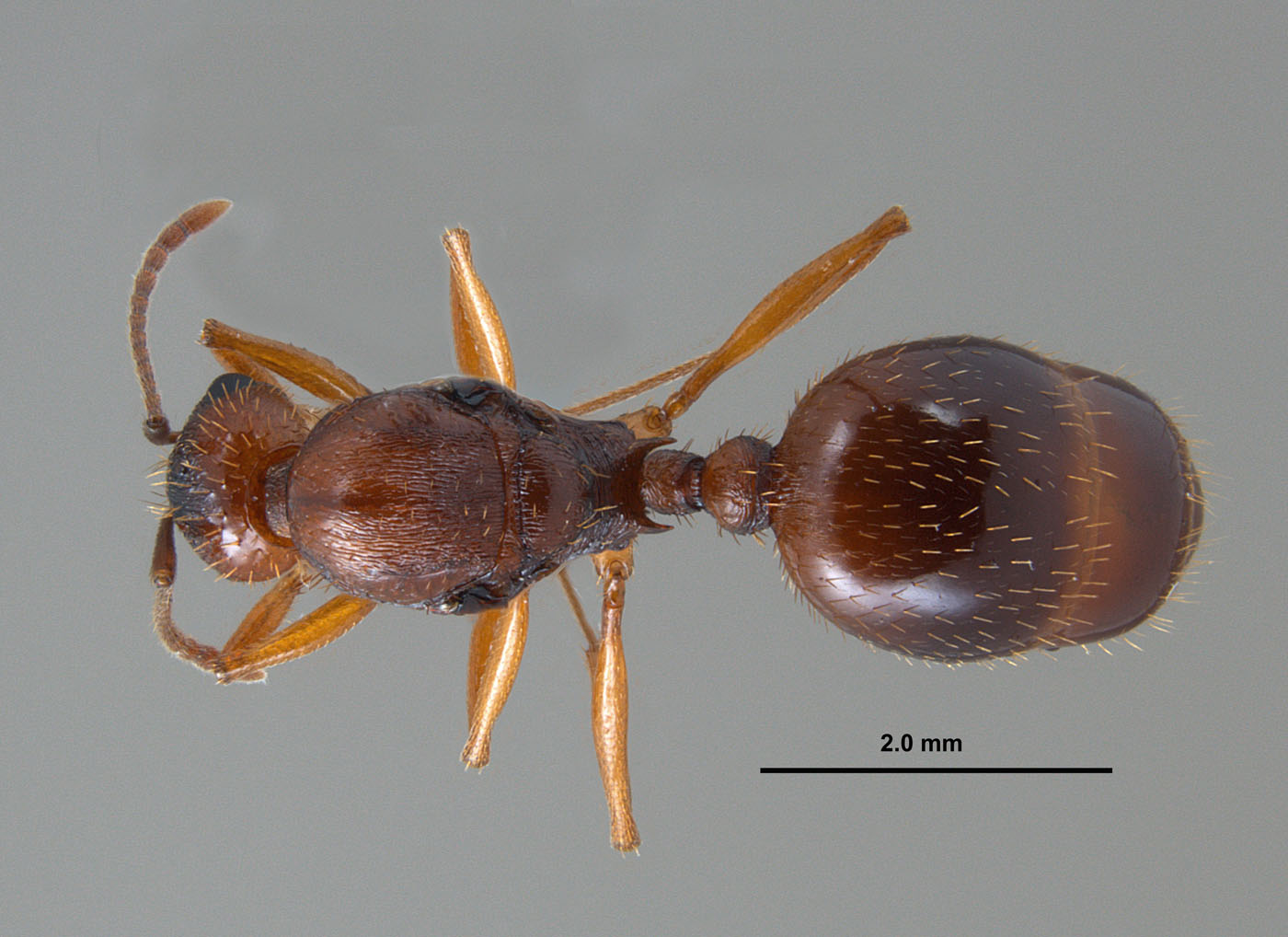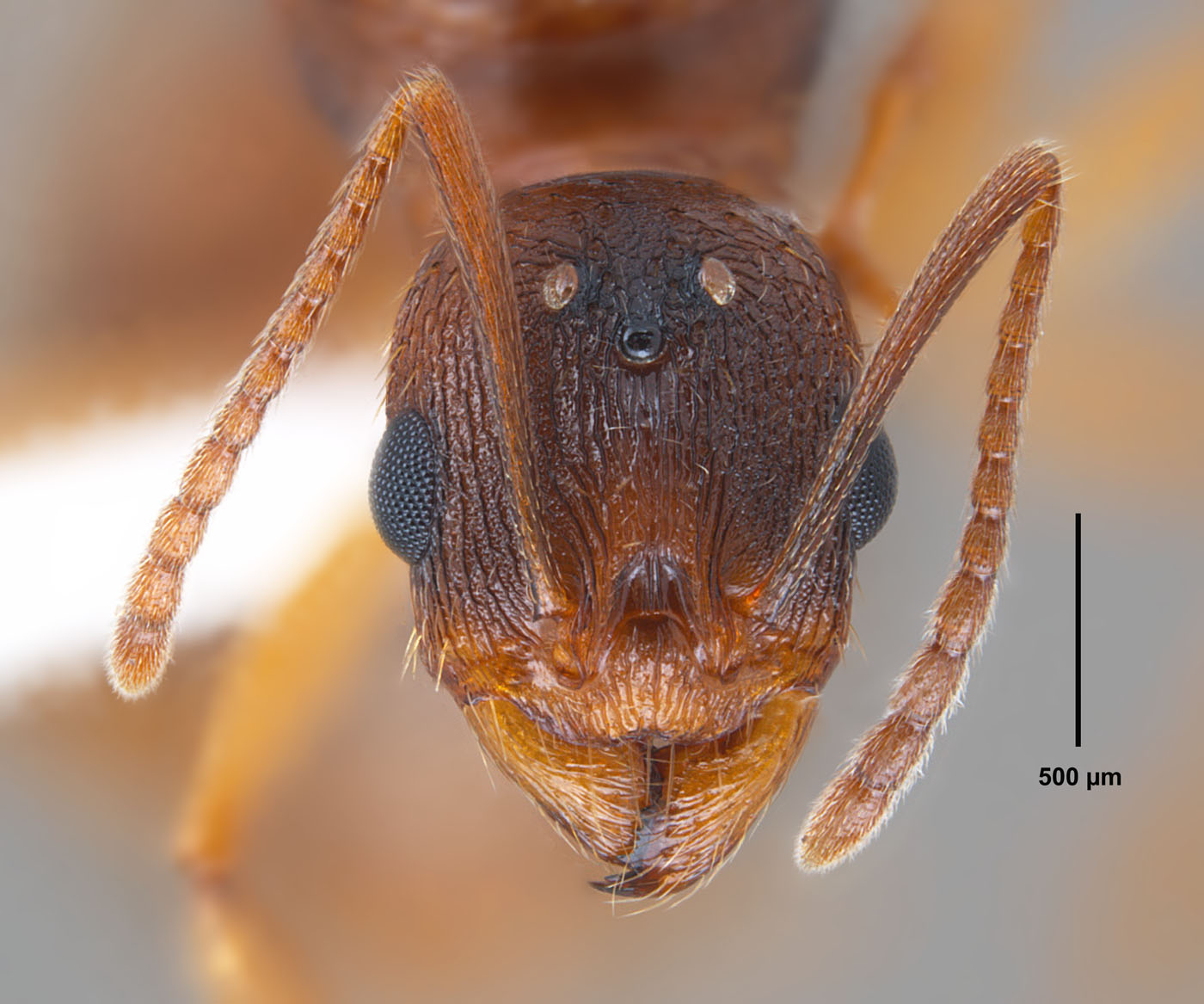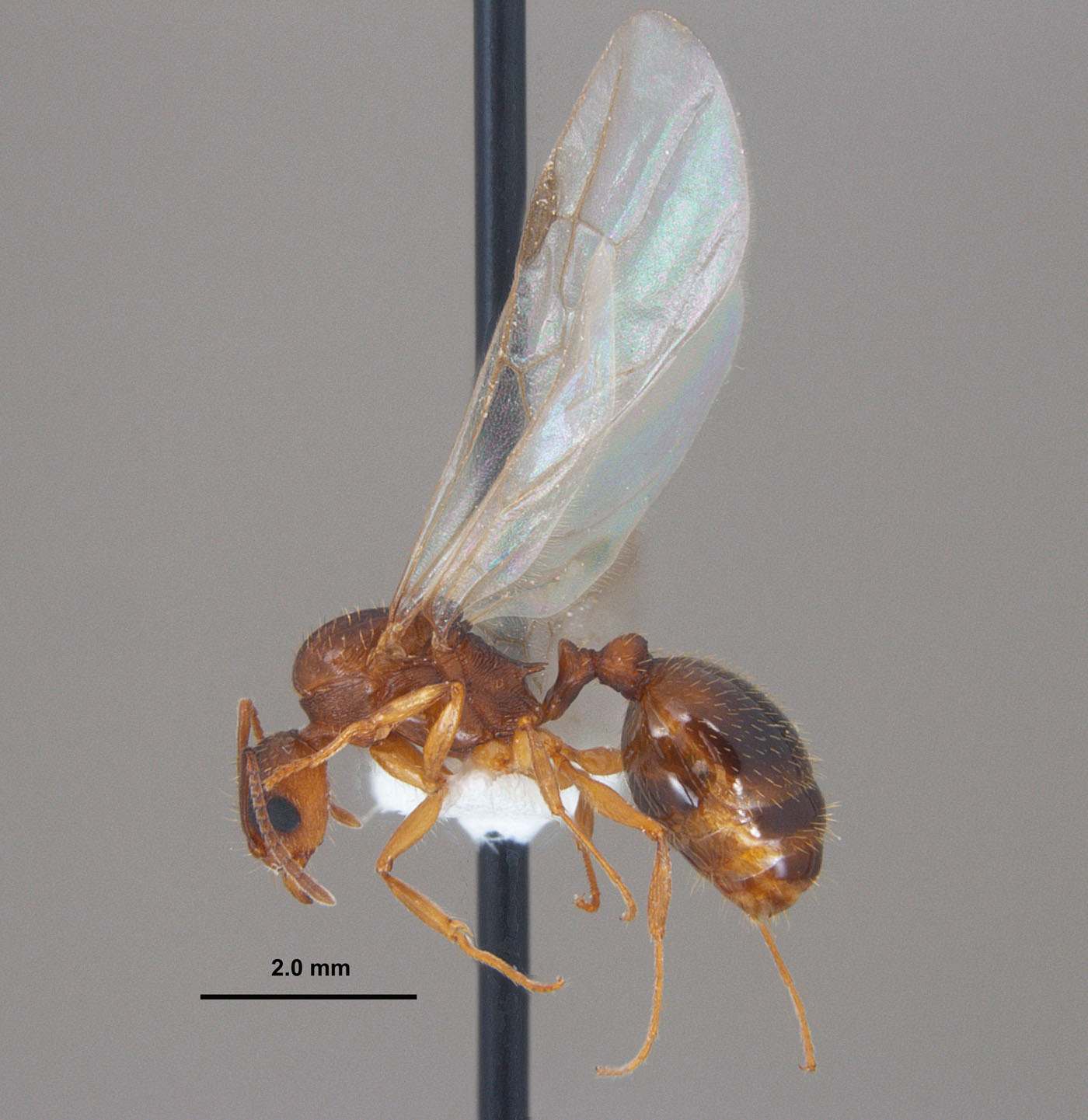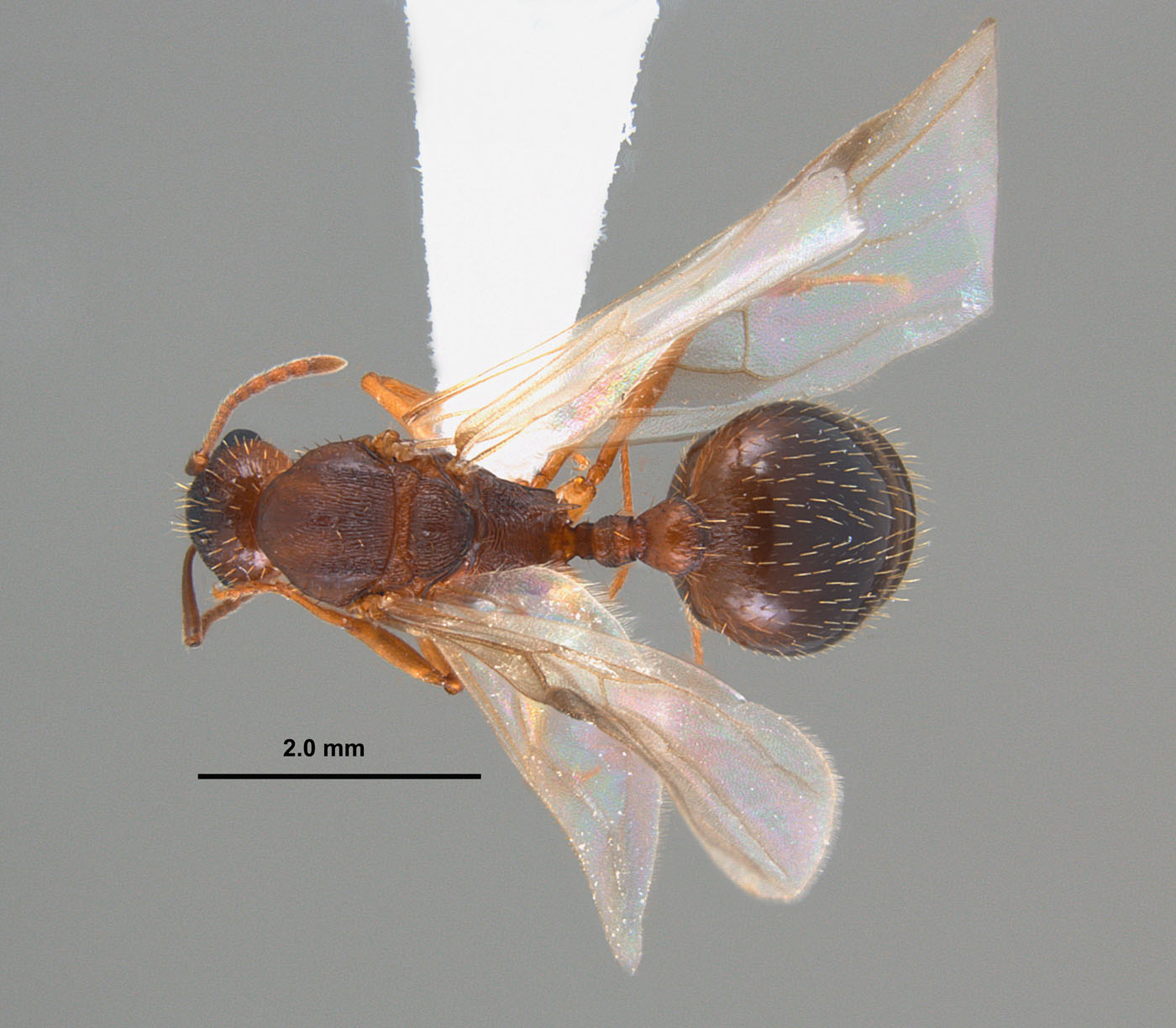Introduction
Ants in the genus Aphaenogaster are medium sized to large, slender with long legs and antennae, usually have propodeal spines (a few species lack spines), have 12 segmented antennae with the last 4 segments forming a weak club. The genus is widespread in North America and species nest in rotting wood, under bark, and in soil.
Identification
Diagnosis. Worker: Slender, medium sized (about 3.5 – 6 mm), reddish to yellowish brown, long-legged; 12-segmented antennae; mesopluera smooth; two-segmented waist; short propodeal spines; contrasting light yellowish brown legs are typical for specimens in our area; sting not present. Queen: Similar in appearance to workers, but larger; mesosoma enlarged; with wings or wing scars; eyes enlarged. Male: Small, winged, dark brownish with a black head, with a flattened head, 13 segmented antennae, and large eyes.
Similar species
According to Umphrey (1996) it is very difficult to distinguish this species from A. N19, a form which he described in his manuscript. However, since he has not named any of these forms as species, I am simply calling our species A. carolinensis for the time being. It is likely that there are a couple of species mixed in there. Workers are variable in size, color, and length of the propodeal spines. Typical specimens in this area are light to darker reddish brown with yellowish brown legs and coxae; heads narrowed and much longer than wide; and prododeal spines short and usually directed backwards toward the gaster. The mesopleural area of the queen is smooth and is quite different from A. fulva, which has a striate mesopleuron. Workers of A. carolinensis differ from A. fulva by having shorter propodeal spines, generally lighter color, lighter colored legs and coxae, forecoxae not being obviously striate, and the mesonotum either not being raised above the level of the pronotum, or if so, then lacking a welt or depression as seen from front to back (or back to front). Both A. carolinensis and A. fulva are often found in the same habitats, although A. fulva tends to nest in rotting wood. Aphaenogaster lamellidens is larger, with a distinctive toothed lobe on frontal carina, often with black banded legs; A. picea differs by being brownish black, only found at high elevations in southeastern mountains; and A. tennesseensis is larger and with long curved propodeal spines.
Biology/Habitat. This is a common ant in wooded habitats throughout the Southeast where it nests in small colonies in the soil. Alates have been collected in early to mid June.
Pest Status: Members of this genus have atrophied stingers and thus, are not stinging pests, and because this species nests in the soil, it is not a structural pest. Due to its abundance in the landscape, it could be an occasional nuisance pest in the home as workers forage for food.
Distribution
Widespread throughout the Southeast.
Literature Cited
Umphrey, G. J. 1996. Morphometric discrimination among sibling species in the fulva-rudis-texana complex of the ant genus Aphaenogaster (Hymenoptera: Formicidae). Canadian Journal of Zoology 74: 528-559.


